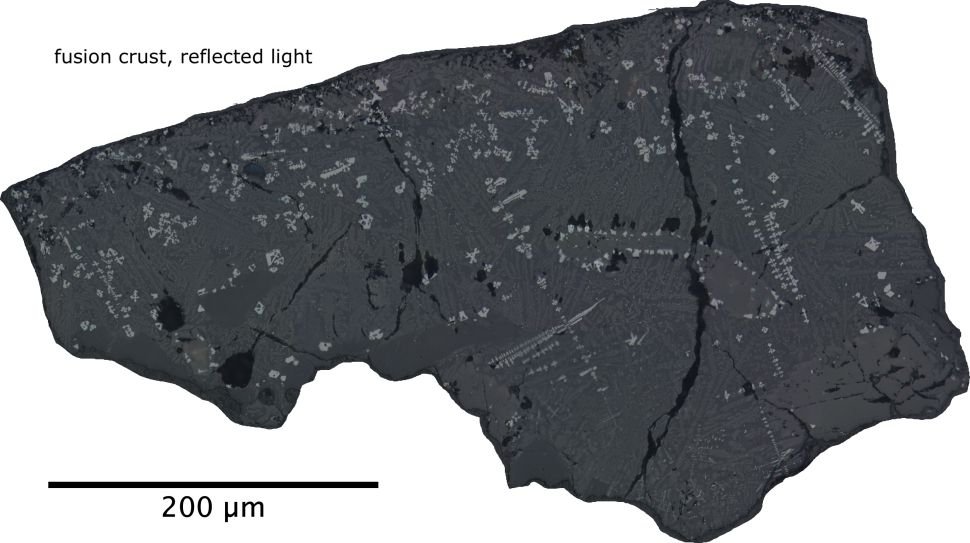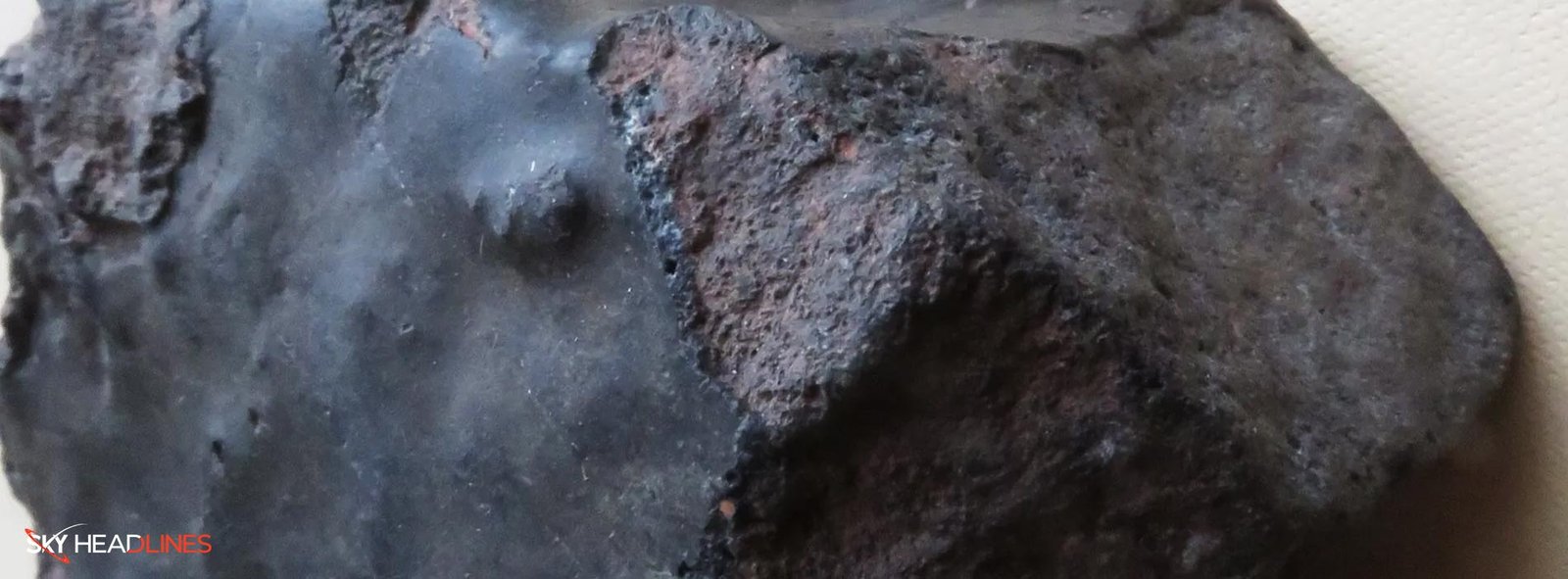The first space stone, Boomerang meteorite could be the first rock that is going to leave the Earth, and then return to it too. If you want to learn “what this stone is capable of, and how it could bring interesting scientific discoveries, then this news is just for you”!
Let’s slowly uncover the hidden, and mysterious parts of this meteorite in this blog post!
Possible First Returning of Space Stone Found in Sahara Desert
A dark reddish-brown “Space Stone” discovered in the Sahara desert, Morocco, may be the first meteorite to have returned to Earth after a journey into space lasting thousands of years. Despite its lengthy cosmic voyage, the rock appears remarkably well-preserved.
The team of scientists presented their findings at an international conference on geochemistry, but the research has not been published in a scientific journal yet.
According to Frank Brenker, a geologist from Germany:
“There seems to be little doubt that it is a meteorite, but whether it truly originated from Earth is still a topic of discussion”.
Now, you must be wondering about the chemical composition and isotopic transformations of the stone, so the following part is intended to answer your question.
Could NWA 13188( Space Stone) be Evidence of an Extraterrestrial Journey? If Yes, Then Let’s Find It!
Initial tests on the rock reveal that it shares a similar chemical composition to volcanic rocks found on Earth. However, some elements within it have transformed into lighter forms, which typically occurs when exposed to energetic cosmic rays in space. The discovery of this space stone is one of the key pieces of evidence supporting the idea that the rock ventured beyond Earth’s boundaries.
Geophysicist Jérôme Gattacceca, leading the investigation, presents compelling evidence supporting the extraterrestrial origin of the meteorite, officially named Northwest Africa 13188 (NWA 13188).
This finding strongly indicates that an asteroid launched the space stone into space, and it later impacted Earth around 10,000 years ago.
Space Stone’s Journey through Space Validate Asteroid Impact Theory: Let’s have a brief overview!
Gattacceca and his team strongly believe that the Space Stone was thrown into space by an asteroid impact on Earth around 10,000 years ago. While volcanic eruptions can also launch rocks into the air, they are unlikely to explain the stone’s unique characteristics. The recent volcanic eruption from the Hunga Tonga-Hunga Ha’apai submarine volcano only propelled rocks up to 36 miles (58 kilometers), falling short of the Space Stone’s apparent journey beyond Earth’s atmosphere.
Once in space, the space stone would have been exposed to galactic cosmic rays, which are high-energy particles originating from exploding stars. These rays travel at incredible speeds and can penetrate our solar system. When they interact with meteorites, they leave behind specific isotopic imprints like beryllium-3, helium-10, and neon-21. In the case of NWA 13188, the levels of these elements are higher than those found in any Earth rock but lower than in other meteorites. This suggests that the intriguing rock might have spent thousands to tens of thousands of years orbiting Earth before re-entering its atmosphere.
It shows clues about its space journey, such as a fusion crust. So, let’s know about it further!
Glossy Fusion Crust: A Key Clue in NWA 13188’s Potential Journey from Space
The second important clue indicating the space stone journey is its glossy melted surface, known as a fusion crust. This crust forms when space rocks race through Earth’s atmosphere during their descent to the ground.

The NWA 13188 meteorite, weighing 1.4 pounds, was bring back in 2018 by Albert Jambon. A retired French professor, at a mineral and gem show in France. Jambon, who has purchased around 300 meteorites for his university over the years. He found this one intriguing because of its unusual nature. However, its true value remains a mystery.
The meteorite was likely acquired by a Moroccan dealer from nomadic Bedouin tribes in the Sahara, making it unclear where exactly it landed on Earth. Jambon collaborated with Gattacceca, an expert in classifying meteorites for private collectors, to study the rock. However, their preliminary findings haven’t completely convinced other geologists, and they believe more research is needed before making extraordinary claims about its origin.
Is the Mysterious Boomerang Meteorite’s Age the Birth of Some Cosmic Puzzle?
One essential factor they haven’t determined yet is the meteorite’s age. Which would indicate whether it is from Earth or not. The current classification suggests it is 4.5 billion years old, like the solar system. But if it originated on Earth, it must be much younger.
The lack of a suitable impact crater is another concern. For a 0.6-mile-wide asteroid crashing into Earth 10,000 years ago, a crater about 12.4 miles wide would be expected. However, none of the 50 known impact craters on Earth. That meet this size requirement are younger than millions of years.
The Sahara, where the Space Stone meteorite was found, does have 12 craters. But the youngest among them is at least 120 million years old, much larger than what would be expected for the proposed timeline. Critics argue that a crater formed just 10,000 years ago would surely have been discovered by now.
Could this Space Stone Belongs to a New Class of Terrestrial Meteorites?
Another crucial aspect that scientists need to investigate is the amount of shock the space stone. That is experience during the original impact. This information can be determine by examining the altered microstructures of the mineral crystals in the rock.

According to Ferrière:
“This can be easily check with the naked eye and doesn’t require much time or expense. Making it a significant observation in this case”.
If the findings confirm the space stone Earthly origin. It will mark the beginning of a new classification of meteorites known informally as “terrestrial meteorites.” Currently, there is only one member of this group, which is a small piece of Earth.
Let’s Conclude Here:
While the boomerang meteorite, space stone is intriguing. There is a need of more research to determine its true origin. And the age before any definitive conclusions can be drawn.





